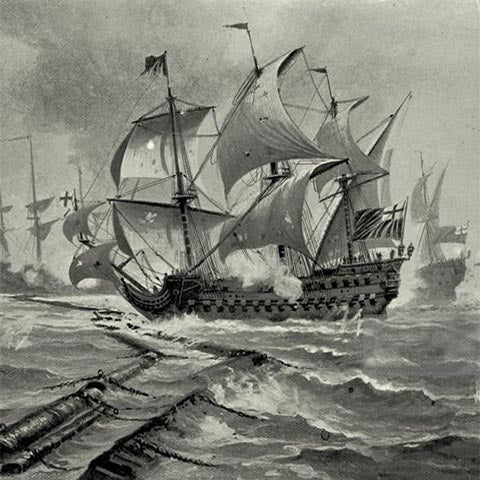
The Battle of Vigo Bay
Share
Early 18th century was the fateful struggle between two great European Houses, the Bourbons and the Hapsburgs or a clash between France and Germany. The War of Succession was a conflict to determine the fate of the Spanish Empire after the death of childless Charles II in 1701. The following year saw a formidable Anglo-Dutch naval fleet assemble to overtake the Spanish port of Cadiz. The adventure, led by Admiral Sir Thomas Rooke, tried in vain to assail the firmly held coastal port and after repeated attempts lasting six weeks, the defeated allied fleet returned homeward in humiliation.

The frustrating loss stuck in the craw of Sir Rooke and upon hearing of a valuable Spanish treasure fleet to the north, decided to investigate. The Spanish commercial fleet had crossed the Atlantic from Veracruz laden with gold, silver, spices and the latest commodity, tobacco snuff. The allied fleet headed for Vigo Bay, a north-western city near the Portuguese border where rumors had the Hispanic riches were stashed. Upon arrival Admiral Rooke discovered a French fleet, led by Admiral Château-Renault, defending the harbor. A barricade of war ships blocking the entrance with a chain and wooden boom across the strait of Rande. The French were also supported by well-armed and fortified land forces.

Admiral Thomas Hobson, the tip of the spear, was ordered to breach the French defenses with his 80 gunned man-of-war, the Torbay. The result of the charge was a decisive breach. However, a French ship that was set alight as a defensive strategy menacing the Torbay, was suddenly extinguished as its tobacco laden hull smoldered the fire. The French then fled in disarray while the Duke of Ormond’s troops assaulted the fortifications. The remaining allied forces followed Hobson and captured Spanish prize that consisted of three large transport ships and smoldering French embarkations filled with tobacco snuff.
The bounty from the calcinated French vessels and Spanish galleons flooded the English market with premium quality Spanish tobacco snuff. This being responsible for the large distribution of snuff in London and for starting the fashion of snuff taking in England. Referred to as ‘Spanish’ by the clerks, they soon abbreviated this to ‘SP’, thereby naming the most popular blend of all. SP remains, even today, as one of the most ubiquitous blends available.
